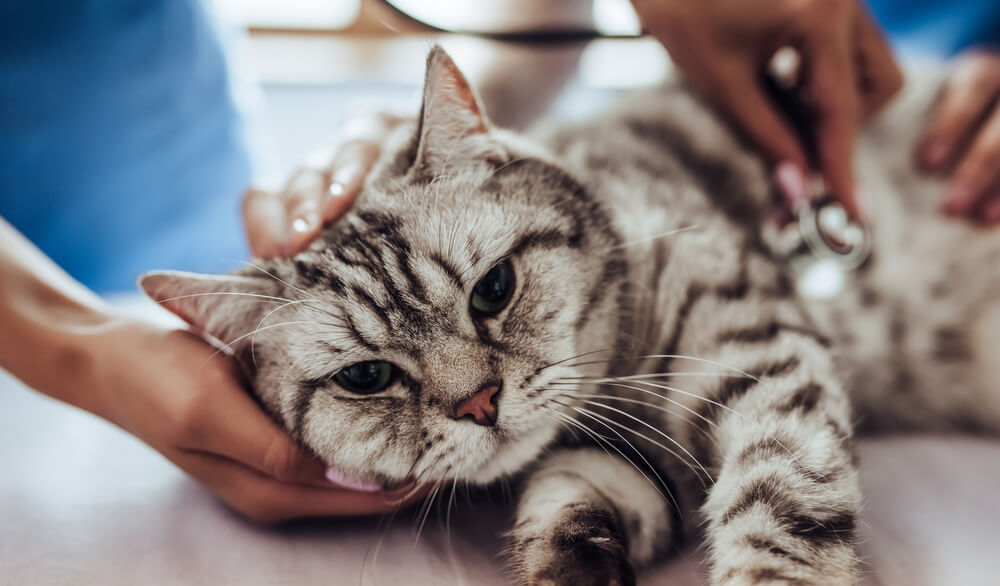Small Sample, Big Results—Understanding Your Senior Pet’s Urinalysis
As your pet ages, their health needs change. Although disease prevention is still important, senior pet wellness care focuses on detecting early changes in organ health and function. Neighborhood Vets Mobile Care takes a comprehensive approach to senior pet health, combining physical evaluation with laboratory analysis of your pet’s blood and urine.
While many pet owners see the value in routine blood work, they may decline urinalysis based on a lack of understanding, since their pet may show no urinary tract infection signs. However, urinalysis provides vital information about the function of your pet’s entire urinary system (i.e., kidneys, ureters, bladder, urethra), as well as other body systems and disease.
What is a urinalysis in pets?
Urinalysis is a diagnostic test that analyzes a urine sample by its visual appearance, chemical composition, and microscopic analysis. Your pet’s urine sample is reviewed in its whole form, as well as a concentrated version that is spun down in a high-speed centrifuge. A complete urinalysis includes the following tests:
- Visual examination — Healthy urine should be pale yellow and clear. Urine may become dark or light yellow, depending on hydration status and kidney health. Red, orange, or brown urine can suggest inflammation or disease. Cloudy urine may indicate bacteria or cellular debris.
- Urine specific gravity — Urine concentration can signal dehydration, or poorly functioning kidneys.
- Urine chemistry and pH — This assesses the sample for presence and quantity of red and white blood cells, protein, glucose, ketones, bilirubin, and acidity or alkalinity (i.e., pH).
- Microscopic examination — A concentrated urine sample is applied to a slide, to detect blood cells, bacteria, crystals, and various cell types from any urinary tract location.
How is a senior pet’s urine sample obtained?
Several methods are used to collect urine from dogs and cats. The prefered method may vary by veterinarian, whether your pet is healthy or sick, or the pet’s temperament. Common methods include:
- Cystocentesis — The gold standard for sterile urine collection, the bladder is palpated or visualized on ultrasound, and urine is drawn through a sterile needle into a syringe.
- Catheterization — Urine is collected through a sterile rubber or plastic catheter that is passed through the urethra into the bladder.
- Free-catch — You will use this method at home to obtain your pet’s sample during their natural elimination. Free-catch samples should be fresh, ideally made less than an hour or two before your appointment. To avoid excessive contaminants, the urine sample should be taken mid-stream for dogs, or from a clean litter box filled with non-absorbent beads for cats. Store your pet’s sample in the refrigerator until your appointment. The following videos provide great visual illustration of free-catch techniques:
-
- Female dog urinary sample
- Male dog urinary sample
- Cat urinary sample
Always use clean collection, transfer, and storage containers, to prevent inaccurate results. If your pet’s routine urinalysis results are abnormal, your veterinarian may request additional testing on a sterile sample taken by cystocentesis.
5 reasons your senior pet needs a routine urinalysis
Annual urinalysis is recommended as a part of comprehensive wellness care for every pet, but especially for seniors, because of their increased risk for several age-related conditions:

- Kidney function assessment — Chronic renal insufficiency (i.e., kidney failure) is common in senior cats and dogs. The kidneys are responsible for filtering waste products from the blood, concentrating urine, and maintaining the delicate pH and electrolyte balance required for life. Failing kidneys cannot provide appropriate filtration, causing dilute urine, and allowing toxins to accumulate and damage other organs. While kidney disease cannot be reversed or cured, early diagnosis can slow its progression.
- Urinary tract inflammation and infection — Senior pets are more vulnerable to lower urinary tract infection, partially because they have reduced bladder control. Untreated urinary tract infections can lead to painful bladder stones, or an ascending infection to the kidneys, causing serious damage. High white blood cell counts, bacteria, and cloudy urine are some indications for infection and inflammation found on urinalysis.
- Cancer — Urinary tract cancers may go unnoticed until suspicious cells are identified in the urine during microscopic examination. Tumors can grow anywhere along the urinary tract, but are most commonly found in the bladder or kidney. Early intervention with chemotherapy may improve survival times for malignant cancers.
- Diabetes mellitus — When blood sugar (i.e., glucose) levels exceed the necessary amount for normal body function, the sugar is eliminated in the urine (i.e., glycosuria). If your pet’s urinalysis detects glucose in their urine sample, a blood sample will be necessary to confirm diagnosis. Diabetes mellitus is frequently diagnosed in middle to older age pets. Overweight pets are at a greater risk for developing this disease.
- Liver disease — Liver tissue regenerates throughout your pet’s life, but if their aging liver is injured from medication, disease, cancer, or scarring (i.e., cirrhosis), the tissue may not recover. When bilirubin (i.e., a byproduct of red blood cell breakdown) is detected in the urine, liver disease or damage is suspected. Liver disease may go undetected without routine screenings, since most of the liver must be damaged before clinical signs appear.
Support your senior pet’s quality of life by adding a routine urinalysis to their annual or semi-annual care. If a change is noted in your pet’s urinary health, Neighborhood Vets Mobile Care can develop a therapeutic plan tailored to their individual needs. Contact us, to schedule an appointment for your senior pet’s wellness care.

